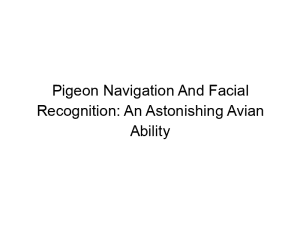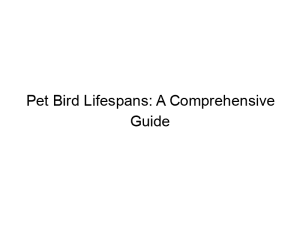Have you ever wondered about the complex vocalizations and intricate body language of cockatoos? These intelligent birds possess a surprisingly rich communication system that goes far beyond simple squawks and screeches. The Secret Language of Cockatoos: What Their Movements and Sounds Mean is a fascinating topic, and this comprehensive guide will unravel the mysteries behind their communication, exploring their various calls, postures, and behaviors. You’ll learn how to interpret these signals, understand their social dynamics, and even appreciate the nuances of their individual personalities through their unique communication styles. Let’s delve into the fascinating world of cockatoo communication!
Cockatoos utilize a wide range of vocalizations, each conveying specific information. From the loud, screeching calls used to announce their presence to the softer, more melodic chirps used during social interactions, their vocal repertoire
is incredibly diverse. These calls can be categorized into several types: contact calls, alarm calls, mating calls, and begging calls, each serving a distinct purpose in their complex social structure.
Body Language: The Unspoken Words of Cockatoos
Posture and Movement
Beyond vocalizations, cockatoos communicate extensively through their body language. The way they hold their bodies, move their heads, and position their wings can reveal a wealth of information about their emotional state, intentions, and social standing within the flock. For example, a puffed-up chest can indicate aggression or dominance, while a lowered head might signal submission or fear.
Interpreting Context: The Key to Understanding Cockatoo Communication
Environmental Factors and Social Dynamics
Understanding the context surrounding a cockatoo’s vocalizations and body language is crucial for accurate interpretation. The same call or posture can have different meanings depending on the situation. For example, a loud screech might indicate alarm in the presence of a predator but could simply be a contact call within a familiar flock. Understanding the birds’ social hierarchy and their relationships within their group significantly enhances interpretation.
Decoding Specific Calls: From Screeches to Chirps
The Significance of Different Vocalizations
Let’s examine specific examples of cockatoo vocalizations. High-pitched, repetitive screeches often signal alarm or distress, while lower-pitched calls might be used for contact or communication over longer distances. Chirping and whistling sounds frequently accompany social grooming or affectionate interactions. The frequency, duration, and rhythm of the vocalizations provide further layers of meaning.
The Role of Body Language in Social Interactions
Courtship Displays and Aggressive Postures
Body language plays a pivotal role in cockatoo social interactions. Courtship displays often involve elaborate head bobbing, wing flapping, and crest raising. Aggressive encounters, on the other hand, might involve puffed-up feathers, wide eyes, and snapping beaks. Observing these subtle cues allows us to better understand the dynamics of their relationships.
Individual Differences in Communication Styles
Personality and Communication
Just like humans, each cockatoo has a unique personality that influences its communication style. Some birds may be more vocal than others, while some might rely more on body language. Understanding these individual differences helps us build stronger bonds with our feathered companions and better interpret their specific signals.
Comparing Different Cockatoo Species
Variations in Communication Across Species
Different cockatoo species exhibit variations in their communication styles. While some species are known for their loud, boisterous calls, others might communicate more subtly through softer chirps and quieter body movements. These species-specific differences reflect their distinct evolutionary adaptations and ecological niches.
The Importance of Observing Cockatoo Behavior
Long-Term Observation for Accurate Interpretation
Accurate interpretation of cockatoo communication requires careful and patient observation over time. By observing the birds in various contexts and noting patterns in their vocalizations and body language, we can gradually build a more comprehensive understanding of their communicative repertoire.
How to Improve Communication with Your Cockatoo
Building Trust and Understanding
Building a strong bond of trust with your cockatoo is essential for successful communication. Providing a safe and enriching environment, engaging in positive interactions, and understanding their individual needs are all crucial elements in fostering a positive relationship.
Common Misinterpretations of Cockatoo Communication
Avoiding Mistaken Interpretations
It’s important to be aware of common misinterpretations of cockatoo communication. What might appear as aggression could simply be playful interaction, while seemingly harmless vocalizations could indicate underlying distress or discomfort. Careful observation and understanding the context are key to avoiding misinterpretations.
The Evolution of Cockatoo Communication
Adaptation and Survival
Cockatoo communication has evolved over millions of years, adapting to their specific ecological needs. Their vocalizations and body language are intricately linked to their survival strategies, enabling them to communicate effectively within their social groups, locate resources, and avoid predators.
Advanced Techniques for Understanding Cockatoo Communication
Scientific Research and Observation Methods
Scientific research into cockatoo communication employs various advanced techniques, including acoustic analysis of vocalizations, detailed behavioral observations, and even brain imaging studies. These approaches provide invaluable insights into the complexities of their communication systems.
The Role of Technology in Studying Cockatoo Communication
Utilizing Technology for Data Collection and Analysis
Technology has revolutionized our ability to study cockatoo communication. Acoustic analysis software helps categorize and quantify different calls, while video recording and motion tracking provide detailed information about body movements and posture. This technological assistance has dramatically improved our understanding of their intricate communication.
The Ethical Considerations of Studying Cockatoo Communication
Minimizing Stress and Ensuring Animal Welfare
It’s crucial to conduct research on cockatoo communication in an ethical manner, prioritizing the welfare of the birds. Minimizing stress, ensuring a safe environment, and obtaining appropriate permits are all essential considerations.
The Future of Cockatoo Communication Research
Potential Discoveries and Research Directions
The field of cockatoo communication research is continually evolving. Future studies may focus on deciphering more complex aspects of their language, identifying the genetic basis of their communication abilities, and exploring the potential for cross-species communication with other avian species.
Frequently Asked Questions
What are the most common misunderstandings about cockatoo communication?
A common misunderstanding is interpreting loud calls solely as aggression. While loud calls can indicate aggression, they also serve other purposes, like contact calls or expressing excitement. Another misconception is assuming all cockatoos communicate in the same way. Individual personalities and species variations significantly affect their communication styles.
How can I tell if my cockatoo is stressed or unhappy?
Signs of stress or unhappiness include changes in vocalizations (more frequent screeching, quieter calls), changes in body posture (hunched posture, fluffed-up feathers), decreased appetite, and self-mutilating behaviors. Changes in feather condition, excessive sleeping, and isolation can also indicate distress.
Can cockatoos understand human language?
While cockatoos can’t understand human language in the same way humans do, they can learn to associate specific words or phrases with actions or objects. They are adept at mimicking sounds, and through consistent training, they can learn to respond to certain commands. However, it’s vital to remember that this is associative learning, not true understanding of the linguistic meaning.
What are the best ways to encourage positive communication with my cockatoo?
Consistent positive reinforcement, providing a stimulating environment, and spending quality time interacting with your cockatoo are all key factors. Offer opportunities for play, problem-solving, and social interaction. Respond appropriately to their vocalizations and body language to show you understand and care. Avoid punishment, as this can damage trust and inhibit positive communication.
Final Thoughts
Understanding the secret language of cockatoos is a rewarding journey that deepens our connection with these intelligent and captivating birds. By patiently observing their vocalizations and body language, and acknowledging the context of their interactions, we can unlock a deeper understanding of their complex communication system. Remember that each cockatoo is an individual, with its own personality and communication style. With patience, observation, and respect, we can build a strong and meaningful bond with our feathered friends, appreciating the rich tapestry of their communication. Continue to observe, learn, and enjoy the unique and fascinating world of cockatoo communication!




